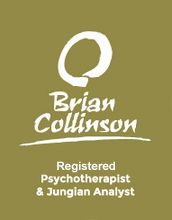Hope and Connection: Accepting the Other—and the Shadow

The phrase “hope and connection” feels very uplifting. It’s easy to feel strongly that “Yes, this is what we need now!” Surely, as we find our way through the pandemic, we yearn for—hope and connection.

However, maintaining hope and connection can sometimes be a daunting thing. That’s because human beings are demanding, complex and imperfect. For many of us, accepting our own imperfection can be a painful and trying path. Yet, accepting the limitations of the other person can be just a whole other level of difficulty.
The poet Amanda Gorman, in her poem “The Hill We Climb”, explores hope, connection and community, and touches upon an important truth:
And yes we are far from polished / far from pristine / but that doesn’t mean we are / striving to form a union that is perfect / We are striving to forge a union with purpose
Amanda Gorman, “The Hill We Climb”
This describes the nature of human connection so well. We can’t have a union that is perfect; that would be inhuman. Yet we can strive intentionally to create connection with others—“a union with purpose”.
This intention to connect with others is a key element in any relationship where we consciously wish to enter into depth or sincere common purpose with others. It is true of the whole spectrum of connection, from a nation seeking to develop a sense of unity and common identity, to two people in a relationship seeking a genuine and intimate connection.
Hope and Connection: What Are We Seeking?
Here we are, in late January, 2021, in the midst of a lockdown which can seem perpetual. As we make our way through this anxiety-laden time, we yearn to find hope, and we yearn for connection with others. Yet, what do we mean by that? What is it that we actually want?
Hope is of central importance to us. As famed hope researcher Prof. C.R. Snyder asserts, hope affirms and keeps alive the possibility of a better future. Hope lives in an active, rather than a passive approach to life. Hope occurs when we’re moving and finding our way toward something, even if we see where we’re headed only very dimly.
Similarly, connection with others matters a great deal to us. As we feel so strongly in the isolation of this time. It’s important to realize that the sense of feeling connected with others has to do with the sense of sharing things with them, such as our deep thoughts, dreams and aspirations, our biggest fears, and our strongest feelings. When this kind of sharing occurs, it’s well-documented that there is very powerful activation of key centres in the brain, and key hormones get released. In Jungian terms, such connection between people is very “numinous”, meaning it has a very powerful, very hard to explain attraction.
We can readily see when these two things are combined—hope and connection—something very strong and potent occurs. When people are connected, and share their hopes, the bond can feel overwhelmingly positive.
Connection and Shadow
Yet hope and connection can also be a very heady, very dangerous combination. We may feel connected to someone, or may want to feel connected to someone, or some group of people, and this may lead us to having huge hopes for the relationship with no possible downside.
This is unlikely to be a sound basis for relationship. As C.G. Jung would tell us, that it doesn’t take the shadow into account. Jung defines shadow as that part of our personality that we don’t wish to acknowledge. In a relationship, the shadow can have a profound impact. The shadow of the other may be very hard for us to see, because they keep it hidden. Hence, we can idealize the other person or group, and see them as a perfect fit with what we want. We may be in for a big surprise when reality hits home.
We also keep our own shadow, the parts of ourselves that we don’t wish to acknowledge, hidden from others. It may come as a real surprise to them when they see our shadow. It may bring up the other’s own shadow in powerful ways such as petulance, rage and manipulation.
On the other hand, far from idealization, our own shadow may get projected on the other, leading us to see them as having negative qualities that they don’t possess. This is very commonly seen in the ways that various groups in society can end up being negatively stereotyped by others.
Union with Purpose
It would seem that the only way to genuinely experience hope and connection is through what Amanda Gorman describes as “union with purpose”. To put that another way, this involves working hard to see others—and ourselves—in the most realistic way possible. Then, within that realism, striving to discover hope that will carry us through the demanding but worthwhile goal of connecting with others who are different from us, and who have their own weaknesses.
The process of self acceptance, that allows us to accept our own shadow and weaknesses, and the shadow and weakness of others, is at the very heart of the process of Jungian /a-midlife-transition.
Wishing you every good thing on your individual journey to wholeness,
